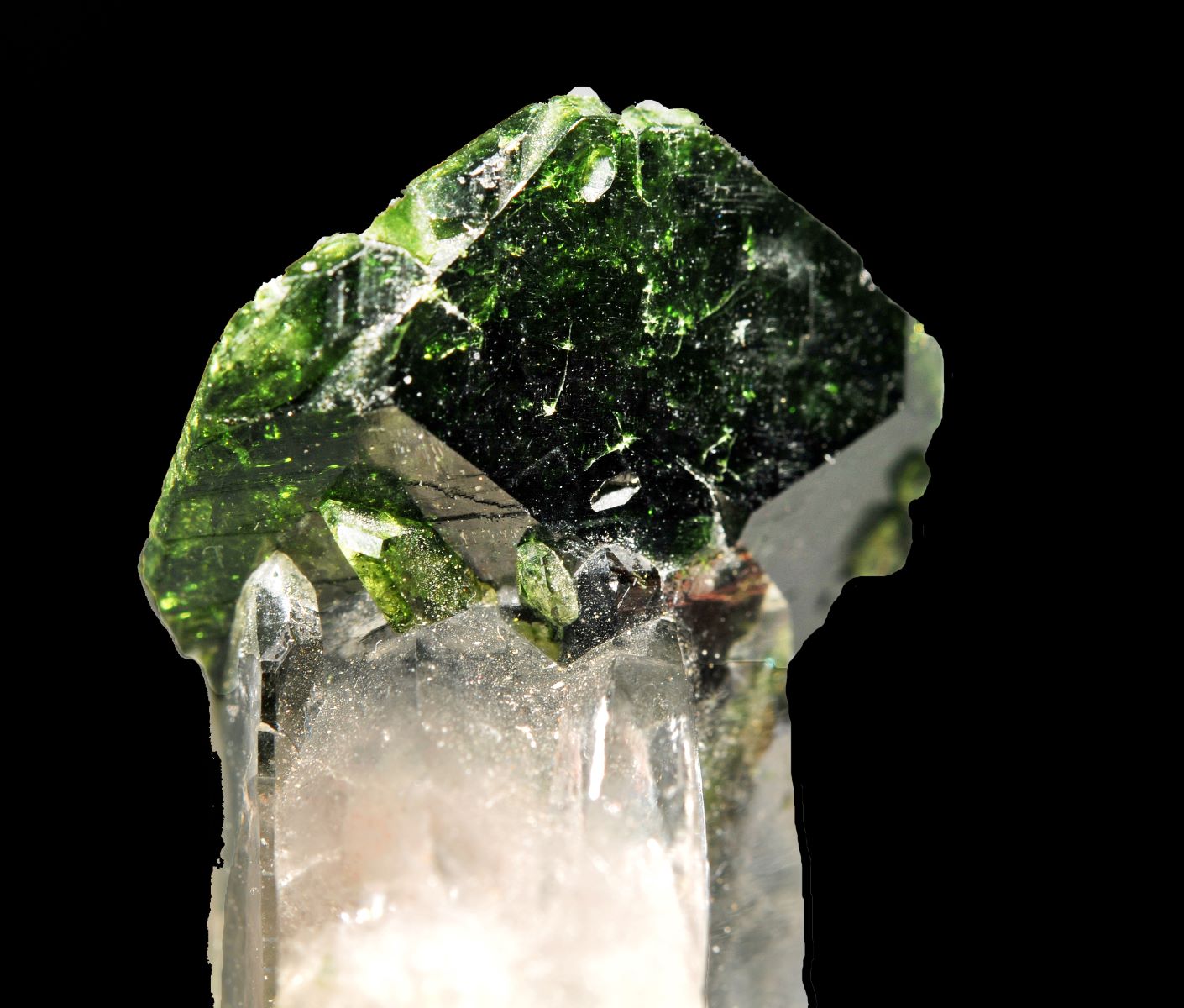
Fluor-Uvite is a fascinating mineral that often catches the eye with its vibrant colors and unique crystal formations. But what exactly is Fluor-Uvite? Fluor-Uvite is a member of the tourmaline group, specifically a calcium magnesium aluminum borosilicate. This mineral is known for its striking green to brown hues, which can sometimes appear almost black. Found in metamorphic rocks and pegmatites, Fluor-Uvite is not just a pretty face; it has a complex chemical structure that intrigues geologists and gem enthusiasts alike. Whether you're a budding rock collector or a seasoned mineralogist, learning about Fluor-Uvite can add a new layer of appreciation to your collection. Ready to dive into some amazing facts about this captivating mineral? Let's get started!
Key Takeaways:
- Fluor-Uvite is a rare and captivating mineral with unique properties, found in metamorphic rocks and known for its striking green color. It is a member of the tourmaline group and can form beautiful crystals.
- With a chemical formula of CaMg3(Al5Mg)(Si6O18)(BO3)3(OH)3F, Fluor-Uvite has a specific gravity of 3.0 to 3.2 and exhibits pleochroism, giving it a shiny, glass-like appearance. It is piezoelectric and pyroelectric, making it a valuable indicator mineral for geologists.
What is Fluor-Uvite?
Fluor-Uvite is a rare and fascinating mineral belonging to the tourmaline group. It is known for its unique properties and striking appearance. Here are some intriguing facts about this captivating mineral.
- Fluor-Uvite is a type of tourmaline, a group of minerals that share a common crystal structure but vary in chemical composition.
- It gets its name from the presence of fluorine in its chemical structure.
- The mineral is typically found in metamorphic rocks, which are rocks that have been transformed by heat and pressure.
- Fluor-Uvite is often green, but it can also appear in shades of brown, yellow, or even colorless.
- The crystal structure of Fluor-Uvite is trigonal, meaning it has threefold symmetry.
- It is a relatively hard mineral, with a Mohs hardness of 7 to 7.5, making it suitable for use in jewelry.
- Fluor-Uvite is often found in association with other minerals such as quartz, mica, and feldspar.
- The mineral is named after the Uva Province in Sri Lanka, where it was first discovered.
- Fluor-Uvite can form beautiful, well-defined crystals that are highly sought after by collectors.
- It is a member of the tourmaline supergroup, which includes other well-known minerals like schorl, dravite, and elbaite.
Chemical Composition and Properties
Understanding the chemical composition and properties of Fluor-Uvite can help appreciate its uniqueness and value.
- The chemical formula for Fluor-Uvite is CaMg3(Al5Mg)(Si6O18)(BO3)3(OH)3F.
- It contains elements such as calcium, magnesium, aluminum, silicon, boron, oxygen, hydrogen, and fluorine.
- Fluor-Uvite has a specific gravity of 3.0 to 3.2, which is a measure of its density.
- The mineral exhibits pleochroism, meaning it can show different colors when viewed from different angles.
- Fluor-Uvite has a vitreous luster, giving it a shiny, glass-like appearance.
- It is transparent to translucent, allowing light to pass through it to varying degrees.
- The refractive index of Fluor-Uvite ranges from 1.62 to 1.64, which affects how light bends as it passes through the mineral.
- It has a conchoidal fracture, meaning it breaks with smooth, curved surfaces.
- Fluor-Uvite is piezoelectric, generating an electric charge when subjected to mechanical stress.
- The mineral is also pyroelectric, meaning it can generate an electric charge when heated or cooled.
Occurrence and Formation
Fluor-Uvite's occurrence and formation provide insights into the geological processes that create this mineral.
- Fluor-Uvite is typically found in skarn deposits, which form when hot, mineral-rich fluids interact with carbonate rocks.
- It can also occur in pegmatites, which are coarse-grained igneous rocks formed from the crystallization of magma.
- The mineral is often associated with contact metamorphism, where rocks are altered by the heat and pressure of nearby magma.
- Fluor-Uvite has been discovered in various locations around the world, including Sri Lanka, Brazil, Canada, and the United States.
- The mineral can form in both high-temperature and low-temperature environments, depending on the geological conditions.
- Fluor-Uvite crystals can grow to impressive sizes, with some specimens measuring several centimeters in length.
- The presence of fluorine in Fluor-Uvite's structure helps stabilize the mineral at high temperatures.
- Fluor-Uvite is often found in association with other tourmaline minerals, reflecting the complex chemistry of its formation environment.
- The mineral can form in a variety of crystal habits, including prismatic, acicular, and radial aggregates.
- Fluor-Uvite is a valuable indicator mineral for geologists, helping them understand the conditions and processes that formed the rocks in which it is found.
Final Thoughts on Fluor-Uvite
Fluor-Uvite, a fascinating mineral, holds a unique place in the world of gemstones. Its distinctive green color and crystal structure make it a favorite among collectors and geologists. This mineral, part of the tourmaline group, often forms in metamorphic rocks and can be found in various locations worldwide, including Brazil and the United States.
Understanding its chemical composition and formation process can provide insights into Earth's geological history. Whether you're a seasoned collector or just curious about minerals, Fluor-Uvite offers a glimpse into the natural world's beauty and complexity.
So next time you come across a Fluor-Uvite specimen, remember the rich history and intricate processes that created it. This mineral isn't just a pretty stone; it's a testament to the wonders of geology. Happy exploring!
Frequently Asked Questions
Was this page helpful?
Our commitment to delivering trustworthy and engaging content is at the heart of what we do. Each fact on our site is contributed by real users like you, bringing a wealth of diverse insights and information. To ensure the highest standards of accuracy and reliability, our dedicated editors meticulously review each submission. This process guarantees that the facts we share are not only fascinating but also credible. Trust in our commitment to quality and authenticity as you explore and learn with us.
